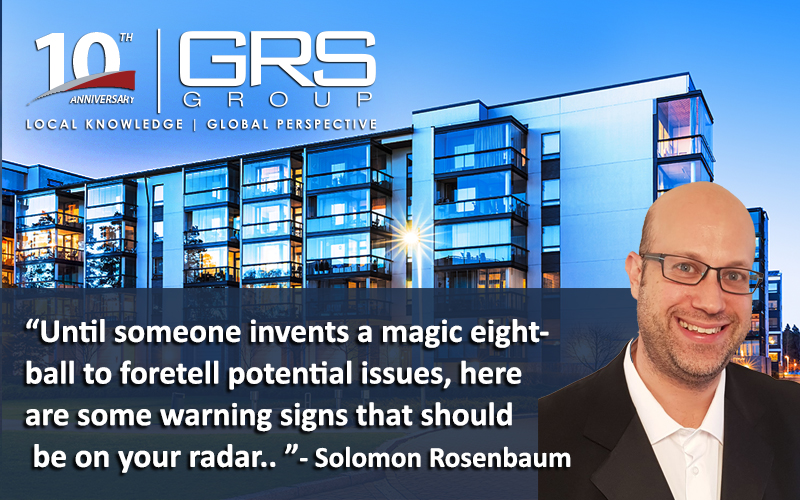The success of an energy project is generally based on the ROI it delivers through the reduction of energy costs versus the investment required.
What is considered a “good” ROI and an acceptable payback period will vary based on the facility type and their financial goals. On one end of the spectrum, I have seen commercial entities that would not invest in a three-year payback project. That can be contrasted with a military facility that felt a 15-year payback project was viable for implementation.
One significant commonality between these two extremes and all of the variants in between is that they want the numbers presented initially to be more or less an accurate portrayal of the expected outcome. Nobody will quibble when the actual savings result in a payback period extending to 5 years when the initial projections had it at 4.5 years. However, when the payback period starts to hit 8 or 9 years, then some answers are in order.
Until someone invents a magic eight-ball to foretell potential issues, here are some warning signs that should be on your radar as well as things to keep in mind to avoid them:
WARNING SIGN #1 – Claims of very high (think 60-70%) energy savings.
The issue with this warning sign is often context. Going from 60w incandescent bulbs to 11w LED bulbs could lead to really high percentage savings. However, most energy projects as a whole will top out at 30% and even that can be a stretch without capital intensive projects.
Avoiding this issue . . .
The first action is to ensure that the savings you attain should be based on the specific conditions at your property. You’ll want to check that the baseline assumptions utilized are applicable to your property type and operational patterns. Second, it’s important to clarify if the savings claims are for a specific part of the project or for the entire project scope. I have seen this claim used by a salesperson who applied this claim to a project that had 11 individual measures. While the savings for two of the individual measures were in the 60-70% range, the overall project had a 23% savings estimation. Not bad, but a far cry from 60%.
WARNING SIGN #2 – Pushing ENERGY savings
and ignoring COST savings
The initial impetus for looking into an energy project may be based on other factors. However, when it comes down to it, the implementation of projects is dependent on the finance side of things. Therefore, nobody really cares about how many kWh, therms, or gallons are saved. They care about how that translates into the bottom line.
Avoiding this issue . . .
The baseline cost per unit should be transparent and should be based on actual historical billing information. For most projects, a blended rate is sufficient. However, depending on the specific project and as more time of use rates are implemented, a more specific rate should be utilized. Once you know the rate per unit, then the cost savings from a specific measure can be identified.
WARNING SIGN #3 – Guaranteeing a simple payback period
Having a simple payback period (in years) is a fairly standard way to present (and prioritize) the potential projects. However, I have seen salespeople pitch a project with a fixed payback period without knowing the site conditions and this is not something on which you can rely. For example, replacing a low-efficiency tank-style water heater with a high-efficiency instantaneous unit will generally save energy. Yet, if re-piping, extending a gas line, or enlarging the mechanical area is needed, then the installation costs are going to rise and increase the payback period.
Avoiding this issue. . .
Ask the salesperson what variables and site conditions they are using to determine implementation costs. Aside from site-specific issues, ensure that they are using labor rates that are representative of those in your metro area.
WARNING SIGN #4 – “Act Now” sales prices
We all want to get a good deal and pay discount prices. However, when you are pushed into making a quicker decision, you may overlook what is actually included in this price. I’ve seen energy projects where they glossed over the fact that there were many add-ons that were not included in that initial price.
Avoiding this issue. . .
Get, in writing, the scope of the project and the equipment to be installed. If the discount is really significant, I do not think it is out of line to ask them how they are able to offer such a low price. You do not want to get into a situation where the provider ends up losing money and then leaves the project unfinished when they realize it just isn’t worth their time.
Final Words . . .
None of these warning signs automatically mean that the project is doomed. However, increased due diligence is required to confirm the viability of a project and to ensure that you are getting the project and results for which you paid. Having this additional information will allow you to properly set the expectations and ensure a successful project.
At GRS Group, our green & energy services are performed with the customer as part of the conversation. We are not going to offer you products or services that do not meet your energy reduction and CapEx goals and limitations. If you have any questions about a potential project or to discuss our green & energy services, I can be reached directly at srosenbaum@fv2.d32.myftpupload.com.
About GRS Group
On the leading edge of innovation in commercial real estate transactions, Global Realty Services Group provides its clients with unsurpassed expertise in the areas of Transaction Services, Title Insurance and Sustainability Solutions. With offices across the United States, Europe, and affiliates around the globe, GRS Group provides local market knowledge with a global perspective for institutional real estate investors, occupiers and lenders worldwide. The GRS Group team has evaluated and advised on over $1 trillion in CRE transactions.

